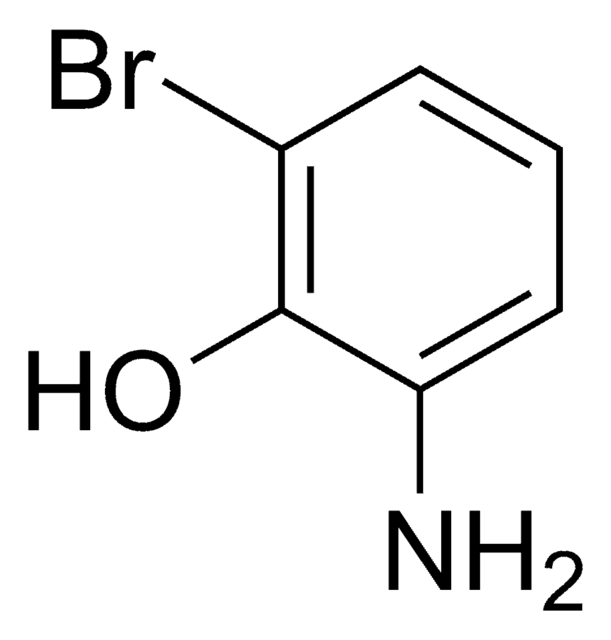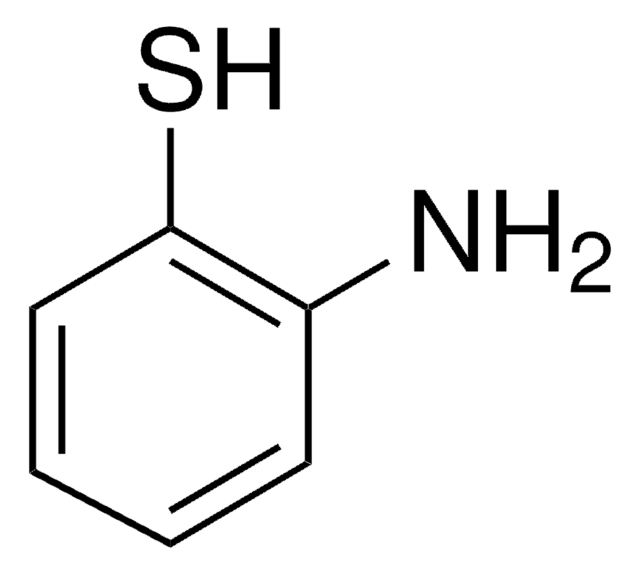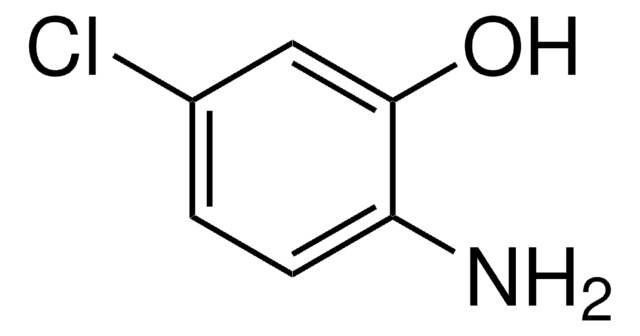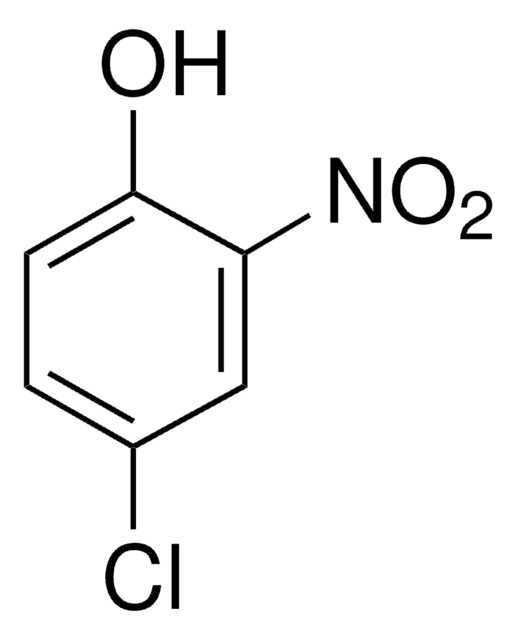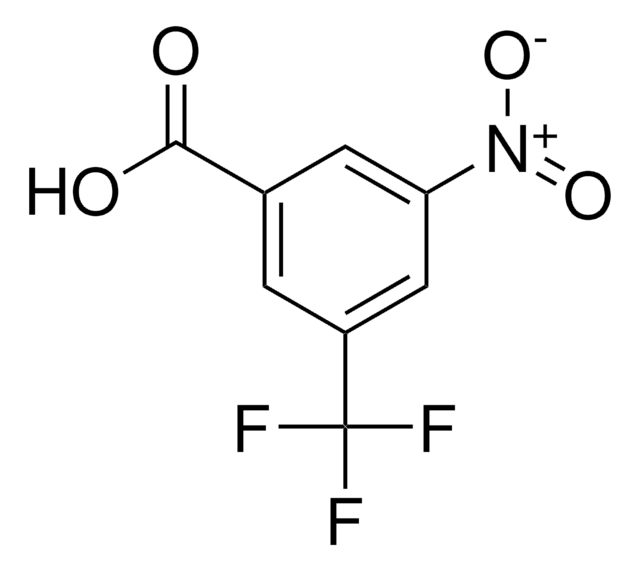437336
4-Amino-2-chlorophenol
98%
Synonym(s):
3-Chloro-4-hydroxyaniline
Sign Into View Organizational & Contract Pricing
All Photos(2)
About This Item
Linear Formula:
H2NC6H3(Cl)OH
CAS Number:
Molecular Weight:
143.57
MDL number:
UNSPSC Code:
12352100
PubChem Substance ID:
NACRES:
NA.22
Recommended Products
Quality Level
Assay
98%
mp
150-153 °C (lit.)
functional group
chloro
SMILES string
Nc1ccc(O)c(Cl)c1
InChI
1S/C6H6ClNO/c7-5-3-4(8)1-2-6(5)9/h1-3,9H,8H2
InChI key
ZYZQSCWSPFLAFM-UHFFFAOYSA-N
General description
4-Amino-2-chlorophenol (4A2CP) is a chlorinated aniline. Nephrotoxic potential of 4-amino-2-chlorophenol and its comparison with 4-aminophenol, 4-amino-2-chlorophenol, 4-amino-3-chlorophenol and 4-amino-2,6-dichlorophenol using isolated renal cortical cells from male Fischer 344 rats has been investigated.
Application
4-Amino-2-chlorophenol may be used in the synthesis of the following compounds:
- N-(3-chloro-4-hydroxyphenyl)-N′,N′-dimethylurea
- 1,4-diketo-3-((4-[N-(3-chloro-4-hydroxyphenyl)amino]sulfonyl)phenyl)-6-phenylpyrrolo[3,4-c]pyrrole, a novel fluorescent pH-indicator
- 4-(4-aminophenoxy)-N-(4-(4-aminophenoxy) benzylidene)-3-chloroaniline
- 4-(4-amino-3-methylphenoxy)-N-(4-(4-amino-3-methylphenoxy)benzylidene)-3-chloroaniline
- 4-(4-amino-2-methylphenoxy)-N-(4-(4-amino-2-methylphenoxy)benzylidene)-3-chloroaniline
Signal Word
Warning
Hazard Statements
Precautionary Statements
Hazard Classifications
Acute Tox. 4 Dermal - Acute Tox. 4 Inhalation - Acute Tox. 4 Oral - Eye Irrit. 2 - Skin Irrit. 2 - STOT SE 3
Target Organs
Respiratory system
Storage Class Code
11 - Combustible Solids
WGK
WGK 3
Flash Point(F)
Not applicable
Flash Point(C)
Not applicable
Personal Protective Equipment
dust mask type N95 (US), Eyeshields, Gloves
Choose from one of the most recent versions:
Already Own This Product?
Find documentation for the products that you have recently purchased in the Document Library.
Synthesis and Characterization of Novel Processable and Flexible Polyimides Containing 3, 6-Di(4-carboxyphenyl) pyromellitic Dianhydride.
Khosa MK, et al.
Advances in Chemistry, 2014 (2014)
Gary O Rankin et al.
Chemico-biological interactions, 222, 126-132 (2014-12-03)
Chlorinated anilines are nephrotoxicants both in vivo and in vitro. The mechanism of chloroaniline nephrotoxicity may occur via more than one mechanism, but aminochlorophenol metabolites appear to contribute to the adverse in vivo effects. The purpose of this study was
Fluorescent materials for pH sensing and imaging based on novel 1,4-diketopyrrolo-[3,4-c] pyrrole dyes.
Aigner D, et al.
Journal of Material Chemistry C, 1(36), 5685-5693 (2013)
C Tixier et al.
Environmental toxicology and chemistry, 20(7), 1381-1389 (2001-07-04)
The degradation products of diuron (photoproducts and metabolites), already described in the literature, were synthesized in order to carry out further investigations. Their ecotoxicity was determined using the standardized Microtox test, and most of the derivatives presented a nontarget toxicity
S K Hong et al.
Toxicology, 110(1-3), 47-58 (1996-06-17)
Aminophenols and halogenated anilines induce nephrotoxicity and mild hepatotoxicity in rats. In this study, the in vivo and in vitro nephrotoxic potential of 4-amino-2-chlorophenol and 2-amino-4-chlorophenol, monochlorinated aminophenols and potential metabolites of 3-chloroaniline, was evaluated. Hepatotoxicity of both compounds was
Our team of scientists has experience in all areas of research including Life Science, Material Science, Chemical Synthesis, Chromatography, Analytical and many others.
Contact Technical Service
